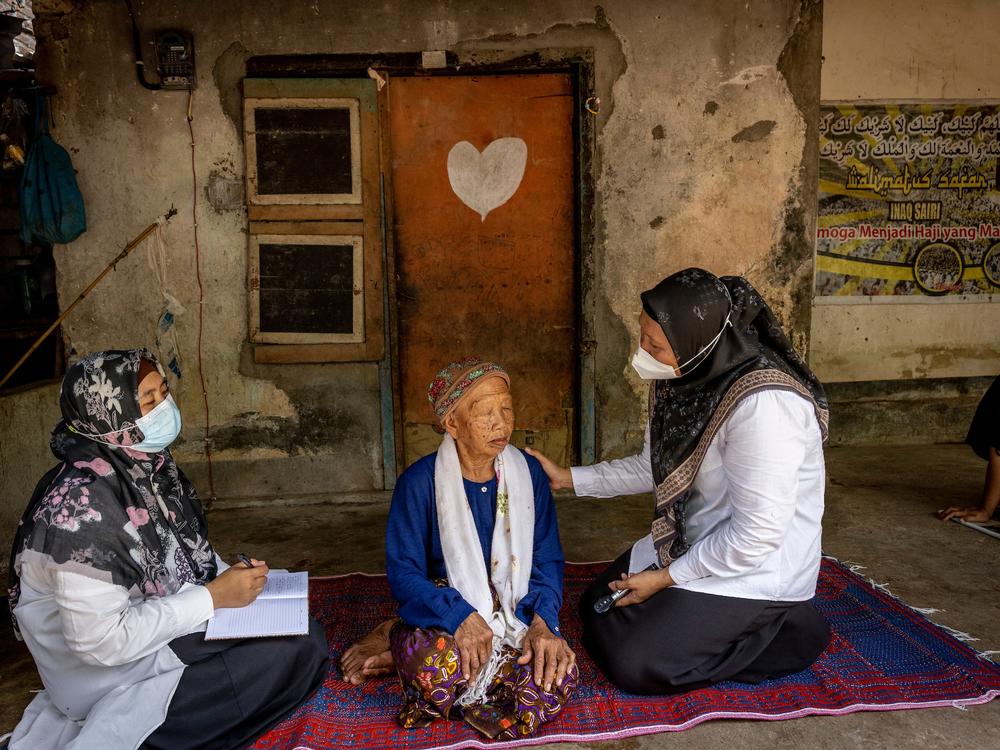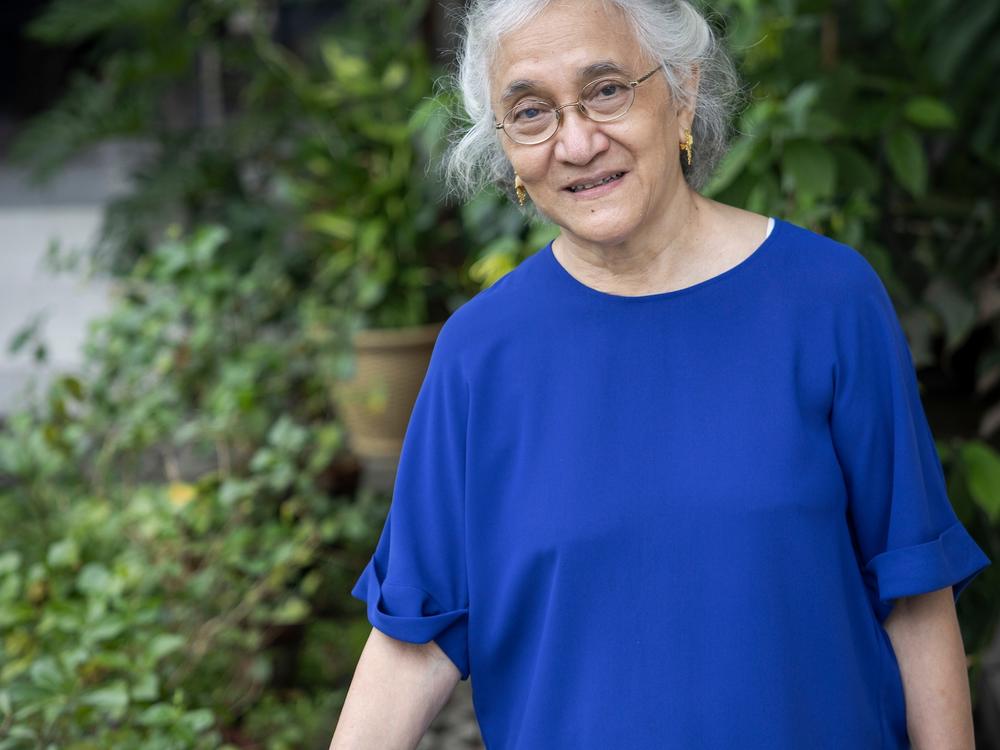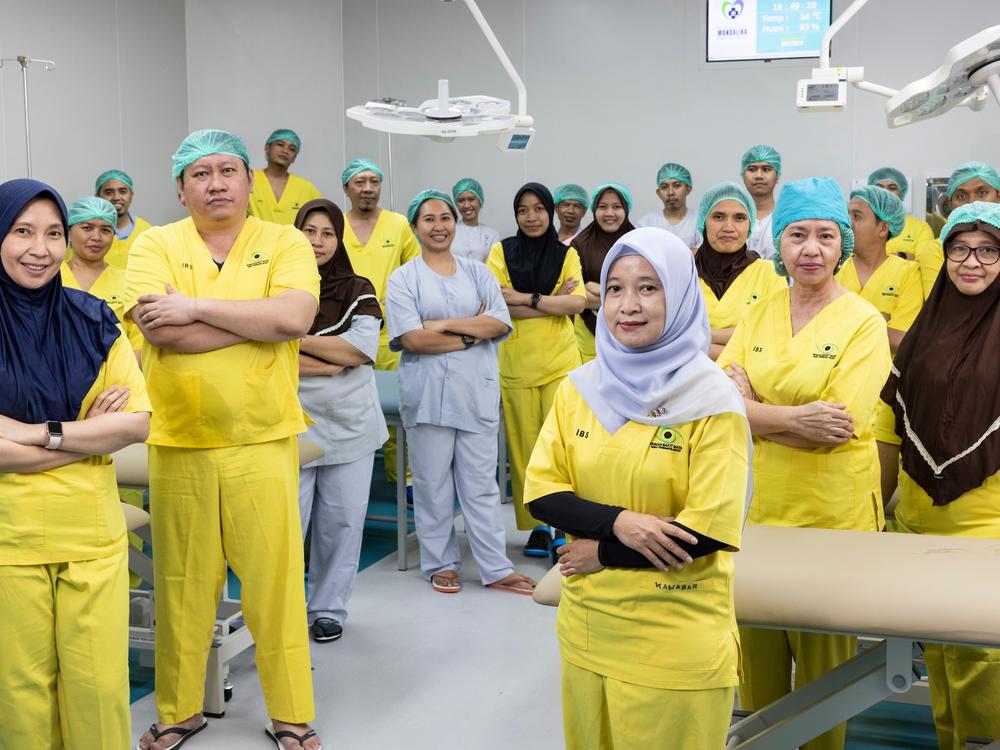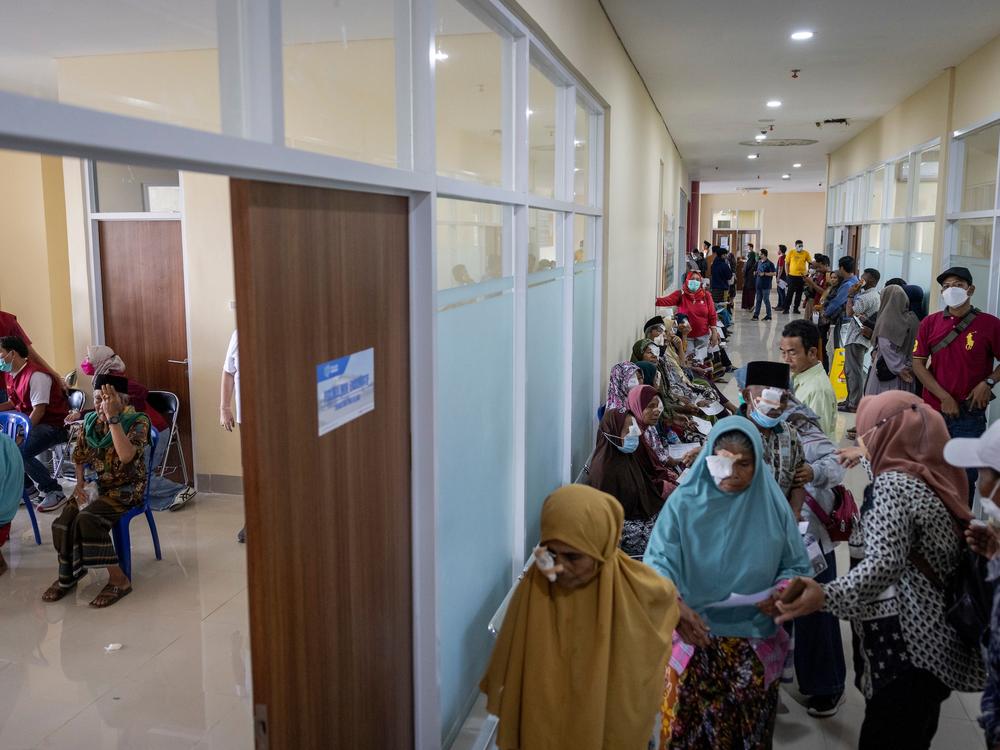Section Branding
Header Content
Prize for the eyes: WHO honors film on Indonesia's pioneering women eye docs
Primary Content
The West Nusa Tenggara province of Indonesia, also known as NTB, is home to some of the most stunning natural scenery on the planet. But for far too long, many of the people who live among these islands have not been able to fully see it.
Indonesia has one of the world’s highest rates of blindness. In 2020, there were an estimated 35 million people with vision loss; of these 3.7 million were blind, according to the London-based International Agency for the Prevention of Blindness. The causes include cataracts as well as diabetes and glaucoma.
A pioneering eye doctor
Dr. Siti Farida, who was raised and educated in the Indonesian capital of Jakarta, started to change that when she arrived in NTB in the early 1980s. At the time, she was the only ophthalmologist serving a population of about 2.5 million people. Despite a staggering caseload, she struggled with being taken seriously.
“Over here, men are considered superior to women. If you’re the father of the family, and there is a chicken for dinner, he gets the breast and others get the wings,” says Farida.
Undeterred, Farida hopped between islands, helping as many patients as possible. She improved their vision — and altered their views. Now there are 27 ophthalmologists in the region serving the current population of 5 million. Most are women and they are widely respected. “It’s changed completely,” Farida says.
The prize was a surprise
This uplifting story is the subject of The Visionary Women of Indonesia, a five-minute documentary that won the Universal Health Coverage Grand Prix, the top prize in one of the categories of the World Health Organization’s 2024 Health for All Film Festival. The event spotlights the work of filmmakers who are raising awareness and understanding of global health challenges.
It was a surprise victory for the Fred Hollows Foundation, a nonprofit international development organization working toward eliminating avoidable blindness. “Usually, our angle is about what the patients go through,” explains the foundation’s Head of Creative Daniel Jesus Vignolli, who spent five days filming in Indonesia to get material to share with donors about the impact of their work. As their team, including filmmaker Nalin Narang, looked through the footage, they were struck by how many of the health workers interviewed were women. “We saw so many females leading and how out in front the women ophthalmologists are,” Vignolli says.
In addition to Farida, the film features Dr. Sriana Wulansari, who explains the importance of recent free mass cataract operations. Programs held with the support of the Fred Hollows Foundation in 2022 in NTB restored the sight of more than 1,600 patients over six weeks. “The reward for me is the best visual acuity for the patient,” she says in the film. “They can see, they can work, study and it makes me happy.” The film ends with an image of Wulansari standing in front of her large team of medical personnel.
Led by women
Female ophthalmologists have been drawn to working in the NTB province. “Maybe they don’t like cities,” she says. Or maybe, she suggests, it is because they like to take on big challenges. “There are a lot of surgeries to do,” she says.
Female leadership in eye health is particularly significant, Narang notes, because one of the key statistics the Fred Hollows Foundation wants people to know is that 55% of the world’s visually impaired are women and girls. There are numerous reasons behind this disparity, Vignolli says. “In some countries, they need a male to come with them to get treatment,” he says. In others, families decide that they can only afford treatment for men. According to researchers, another factor is that women have a longer life expectancy than men, which puts them in an age group at higher risk for certain eye conditions.
Cost is certainly an issue in the NTB region, and it can be quite difficult for those who live in remote areas to access a surgeon, Farida says. But for many Indonesians, lack of adequate eye care is a matter of awareness. “Not many people are literate, so they don’t mind not being able to read as long as they can work in the fields,” she says. “They don’t recognize poor vision until they become blind. We still have to educate them about blindness.”
Farida compares the situation with her own experience with nearsightedness in childhood. “I had myopia, but I did not know. At school, my teachers noticed my grades were going down and I couldn’t read the blackboard,” she says.
Her teachers encouraged her to get her vision checked, and she got the glasses she needed.
For Vignolli, one of the most powerful moments in the film is when a female doctor removes a bandage from a woman’s left eye. The patient is immediately overwhelmed with emotion. “She is saying a Muslim prayer, thanking God, and thanking the doctor,” he says.
After experiences like this, people recognize the importance of eye health, and they want to maintain it, Farida says. And that is also when doctors like her can shine with all patients. “I think they prefer female ophthalmologists,” she says. “When I have a patient, I take the time to chat with them, not just about their eye condition, but also about their families. I love chatting about children.” Their compassion comes through powerfully in the film. Narang hopes that seeing doctors doing such vital work — and doing it so well — will inspire others around the world to encourage more female leadership in medicine.
The Health for All Film Festival prize has exposed a wider audience to the importance of eye health.
“There is a lot more conversation happening,” says Narang, who wants to build on that by continuing to create documentaries. One of the next projects he’s working on features an Australian economist who is making a case for investing in fighting blindness. “We will quantify how beneficial it is for countries to invest in eye health,” he says.
Vicky Hallett is a freelance writer who regularly contributes to NPR.




